
The road to buying a car starts online, long before a buyer ever approaches a car dealership. According to Google, 76% of new car shoppers begin their journey digitally, spending an average of 7 to 11 hours researching before making contact. That means if your dealership or auto brand isn’t showing up where it matters, you’re missing out. Badly.
Today’s automotive marketing is all about visibility, trust, and timing. Consumers aren't just searching “cars near me”, they’re exploring specs, reviews, and comparisons of the cars they want to buy. They scroll endlessly through reels, listings, and take the help of AI tools for recommendations. This shift has made automotive digital marketing a game of strategy, not just presence.
If you’re planning to launch a digital marketing strategy from scratch, you don’t need to throw money at every channel. You need a smart, focused plan. From auto SEO services that help you rank in local searches to automotive PPC ads that catch serious buyers at the right moment, success comes from working smarter, not louder.
In this blog post, I have covered a few pertinent digital marketing strategies for the automobile industry that are actually working right now. The blog post will offer you insights, examples, and tactics you can apply whether you’re selling sedans or promoting your EV startup.
Why Auto Brands Need to Adapt or Fall Behind?
The numbers tell the story. Traditional auto ads just aren’t delivering like they used to. TV and print are still expensive, but they’re not where today’s car buyers are looking. Over 80% of them start their journey online, often narrowing down choices before ever visiting a dealership.
That shift has opened the door for digital-first brands to take the lead. They’re using automotive digital marketing strategies built around intent, not guesswork. With strategies like automotive PPC ads and local SEO, they’re reaching serious buyers right.
Adopting digital marketing isn’t about ditching traditional marketing methods overnight. It’s also not about relying on them alone. That’s risky. Today’s competitive edge comes from being where your customers already are, like search engines, video platforms, and social media platforms. Adapt now, or risk losing out to brands that already have.
Proven Digital Marketing Strategies for the Automobile Industry
Not every digital marketing effort leads to results, but the right approach, done at the right time, absolutely can. In a space where attention is short and choices are endless, making a presence means more than just being online. This section covers what works for today’s auto brands. Whether you're selling sedans, SUVs, or servicing vehicles, these insights are built to help you connect, engage, and convert without second-guessing your moves.
1. Local SEO to Get Found by Local Buyers
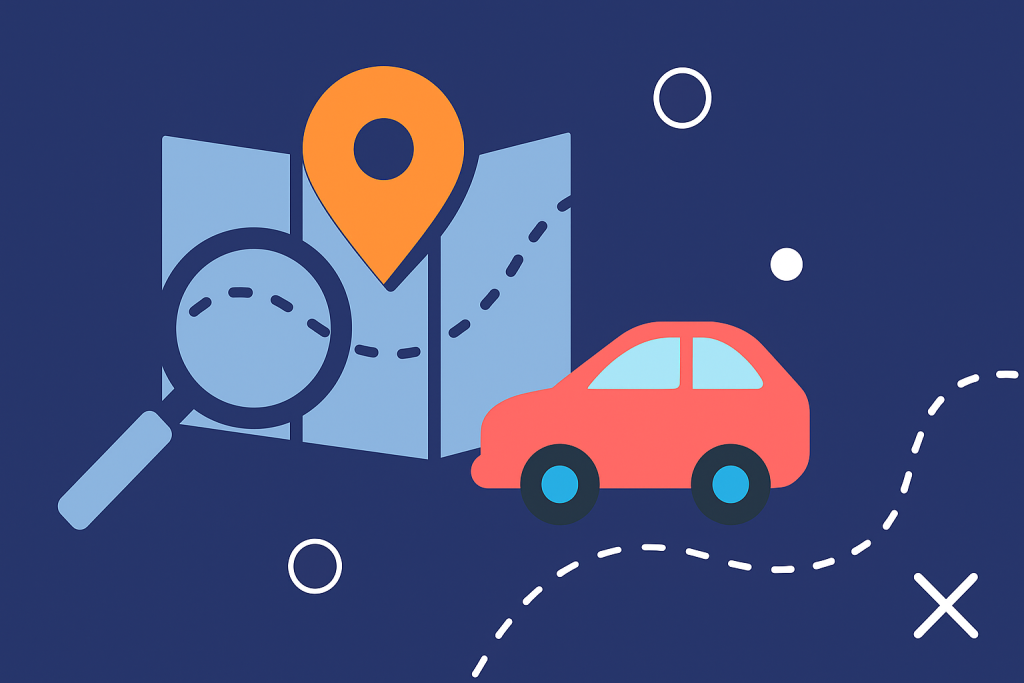
In the auto industry, most buyers don’t simply browse. They search. A simple phrase like “dealership near me” can decide who gets the next walk-in lead. That’s why local SEO isn’t optional anymore. It’s how you show up when intent is high and choices are being made fast.
Why Local Visibility Matters Now?
When someone’s searching with location-based keywords, they’re rarely window shopping. They’ve moved beyond research and are ready to act. Studies show that over 75% of people who run local searches visit a business within a day. That’s the moment you need to be found, not two pages deep in the results.
Start with a Google Business Profile That Stands Out
It’s not enough to claim your profile. You’ve got to make it useful. Keep your business hours accurate. Upload real photos of your dealership, not stock photos. Use the Q&A section to address what people ask most. And respond to reviews, not just the positive ones. It shows you care and pay attention to your customers.
2. Paid Ad Campaigns That Target Actual Buyers
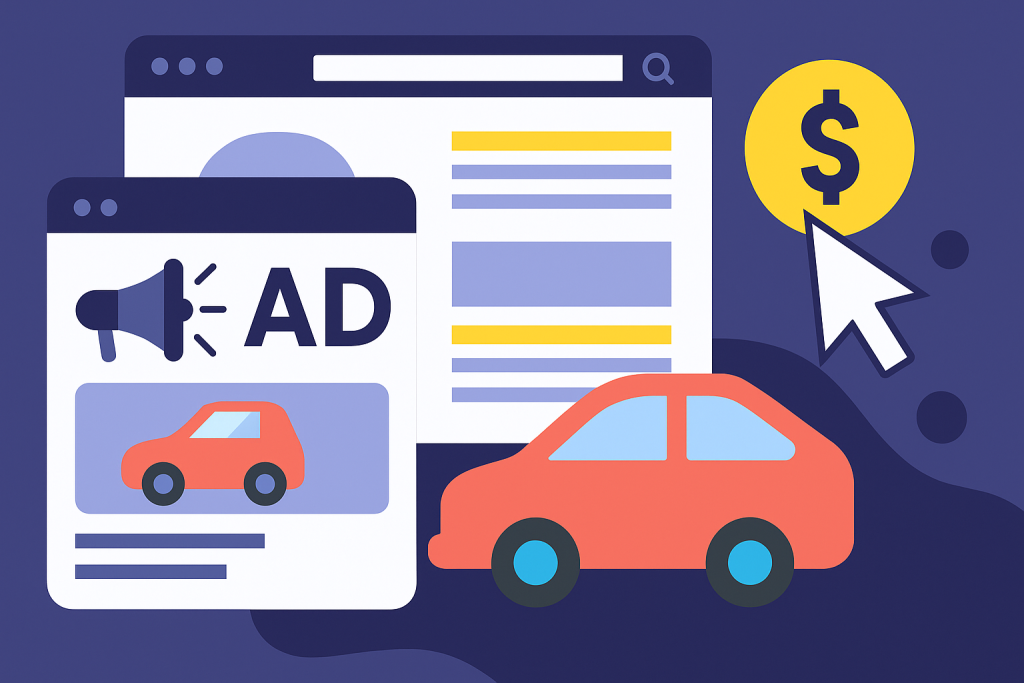
Paid ads aren’t new in the automotive space, but most businesses still waste their budget chasing the wrong clicks. The real value lies in getting your message in front of buyers who are ready, or nearly ready, to make a decision. That’s where a focused automotive PPC ads strategy comes in.
Why Intent-Based Targeting Matters?
Not every search done is intended to achieve similar goals. Someone googling “new car designs 2025” might just be curious. But a user searching “best SUV under 20 lakhs near me” is almost ready to buy a car. Good campaigns don’t follow everyone. Instead, they focus on high-intent keywords that connect with real shoppers who are ready to buy.
With platforms like Google Ads, Meta, and even YouTube, you can run campaigns that align with specific buyer behaviors, vehicle type, location, device, or browsing habits. This helps optimize your budget and increase your odds of connecting with someone who’ll take action.
Retargeting Ads Keep You in the Game?
Many buyers don’t convert on the first visit, and that’s normal. They check a few sites, compare options, and maybe leave without contacting anyone. Retargeting ads let you follow up gently. You remind them of a model they viewed or an offer they left behind. This works especially well for dealers running time-sensitive promotions.
3. Build Your Brand Through Social Media Marketing
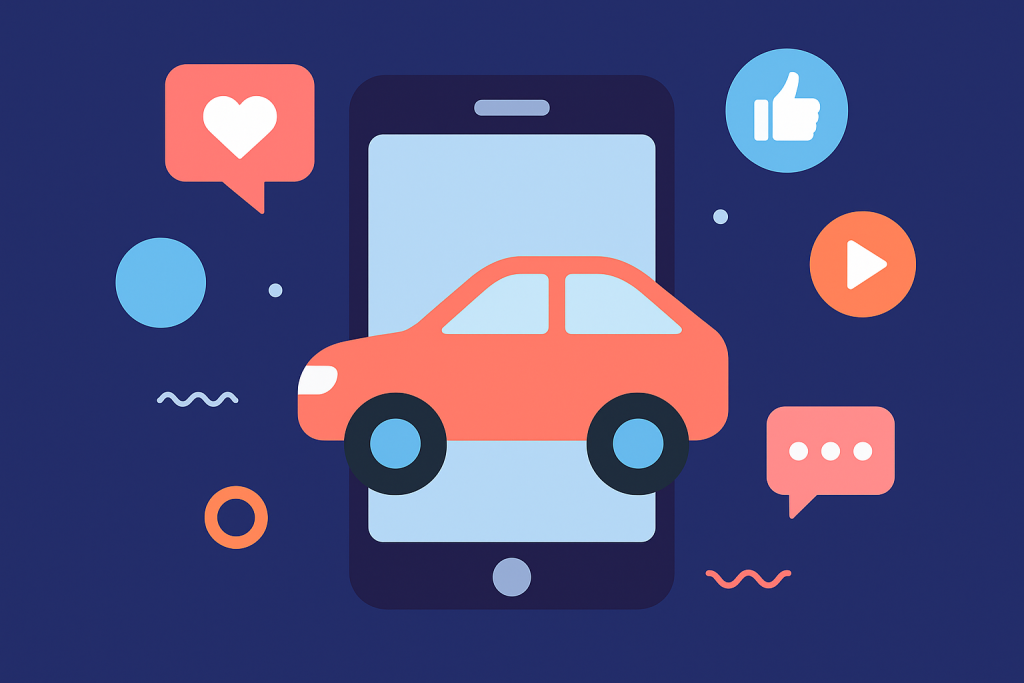
Social media isn’t just a place to post car photos. It’s where buying decisions begin. Today’s auto buyers visit social media platforms before they search for the vehicle. They check reels, tap through stories, and watch quick walkarounds before even considering a test drive. For dealerships and service centers, it’s a space you can’t afford to ignore.
Pick Platforms That Match Buyer Behavior
Different social media platforms are meant for serving different goals. Instagram and Facebook are ideal for showcasing vehicles, deals, and behind-the-scenes moments. YouTube is perfect for test drives and service how-tos. If you're in B2B, say fleet sales or auto parts, LinkedIn could bring value. Focus on where your audience already spends time, not where everyone else is posting.
Visual formats matter. A short reel showing off a new model or a live Q&A from your lot does more than a static post. And on the best social media platforms for car sales, these formats get priority.
Make Your Content Useful, Not Just Promotional
People scroll fast. What stops them is content that answers a question, shows real value, or tells a story. Think customer deliveries, quick financing tips, or service FAQs in bite-sized posts. Highlight what’s available and what sets your team apart. Local hashtags and location tagging can also boost reach.
Engage Like You’re Talking to a Neighbor
Social media isn’t about bluntly broadcasting your message. It’s a platform to begin a conversation. Reply to comments, thank people for sharing photos and respond to DMs. That interaction builds familiarity. And when someone’s ready to buy or service a vehicle, you’re already top of mind. A strong car dealership marketing presence on social channels builds more than likes. It builds trust, visibility, and buyer confidence before a single visit happens.
4. Create Smart Content Marketing that Answers Buyer Questions
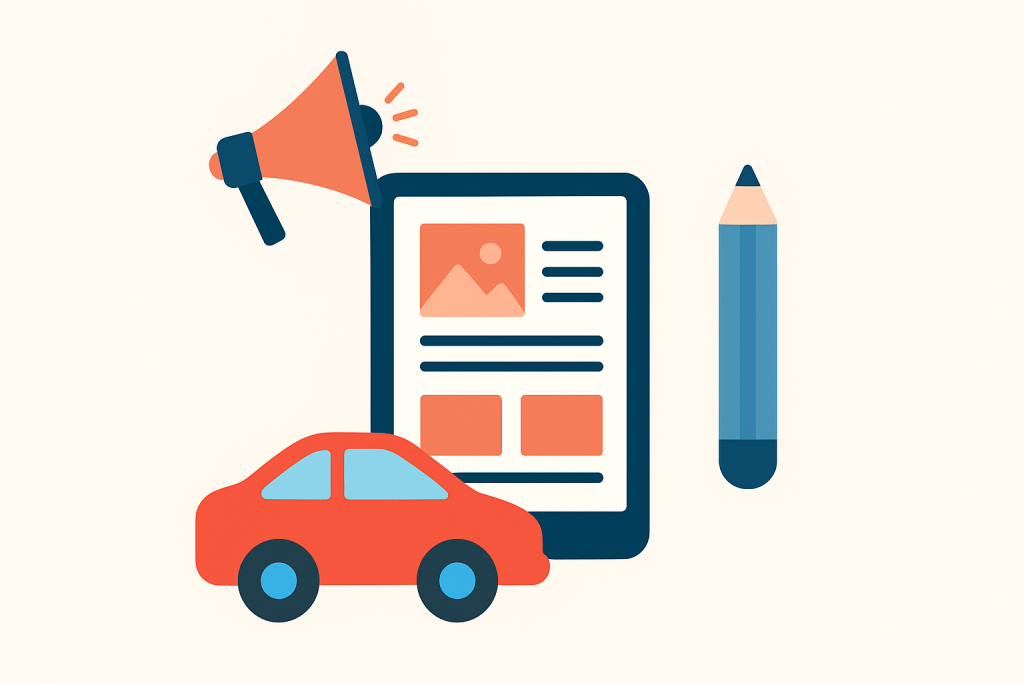
Most people don’t just walk in and buy a car anymore. They take their time. They read reviews, compare features, check fuel mileage, and even look into service costs, sometimes more than once. Every detail matters before they’re ready to move forward. That’s where helpful, honest, and well-timed content can do magic. If your website and social channels aren’t answering those buyer questions clearly, someone else’s will.
Think Like a Car Shopper, Not a Marketer
Before a buyer picks up the phone or walks into your dealership, they’ve likely already asked Google a dozen things: “Which SUV has the best mileage?” “How does this model compare to that one?” “What’s the difference between base and premium trims?”
When you create content that answers these real questions, through blogs, videos, explainers, or checklists, you’re not just filling space. You’re building authority. This is where strong automotive content marketing tips come in handy: stay relevant, clear, and local.
Cover Topics That Matter Right Now
Don’t chase trends that don’t convert. Focus on content that reflects your actual inventory, services, or buyer pain points. Example? A video showing how to connect a phone to a specific model’s infotainment system is more helpful than a flashy ad. A side-by-side comparison of two cars you sell builds real value.
Use natural keywords and location cues so buyers near you find your content. And link your content back to key landing pages to drive action.
Update Content Often and Make It Real
Content doesn’t need to be perfect; it needs to be current and useful. Refresh old posts. Add FAQ sections to popular models. And mix formats: some people read, others watch. Done right, content becomes more than a traffic tool. It becomes a reason for buyers to come back and reach out.
5. Create a Brand That People Remember and Relate To
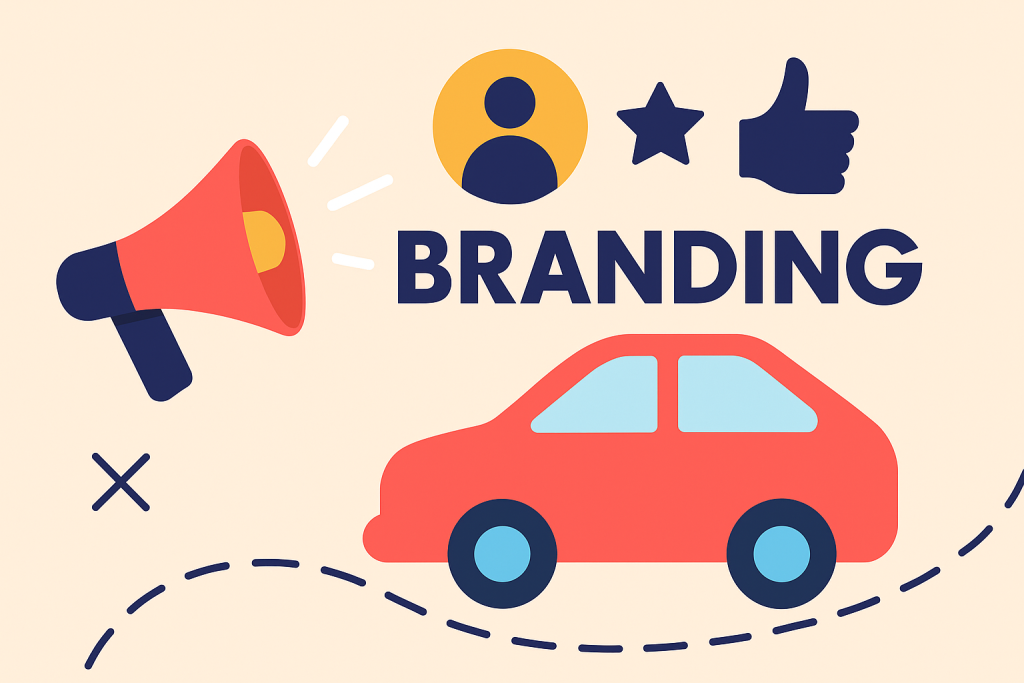
When people think about your dealership or service center, what comes to mind? If the answer is unclear or no different from the store down the street, you’ve got a branding problem. A strong, relatable brand does more than just sell cars. It creates a connection. It builds loyalty. And over time, it makes you the first name people think of when it’s time to buy or upgrade.
Start with What Makes You... You
Every dealership has something unique, but most don’t talk about it well. Maybe it’s your history. Maybe it’s how your team treats first-time buyers. Maybe it’s how fast you turn around service requests. These details matter. Your vehicle branding strategy should pull from what’s real, not just what sounds good in an ad.
Stay Consistent Everywhere You Show Up
From your car website homepage to your showroom to your Instagram captions, your message should feel the same. Use the same tone, the same level of honesty, and the same visual style. If your online presence feels polished but your in-person vibe is cold or pushy, that disconnect breaks trust. Consistency across digital touchpoints builds familiarity. And familiarity builds trust.
Put Real People at the Center of It
Show your staff. Highlight happy customers. Use real names, local stories, and honest moments. This approach not only strengthens your brand but it also makes it feel human. People don’t remember a dealership because it had the lowest price. They remember how it made them feel. If your brand feels honest, relatable, and local, you won’t need to shout. Buyers will come to you. And many will bring friends.
6. Launch Omnichannel Marketing Campaigns
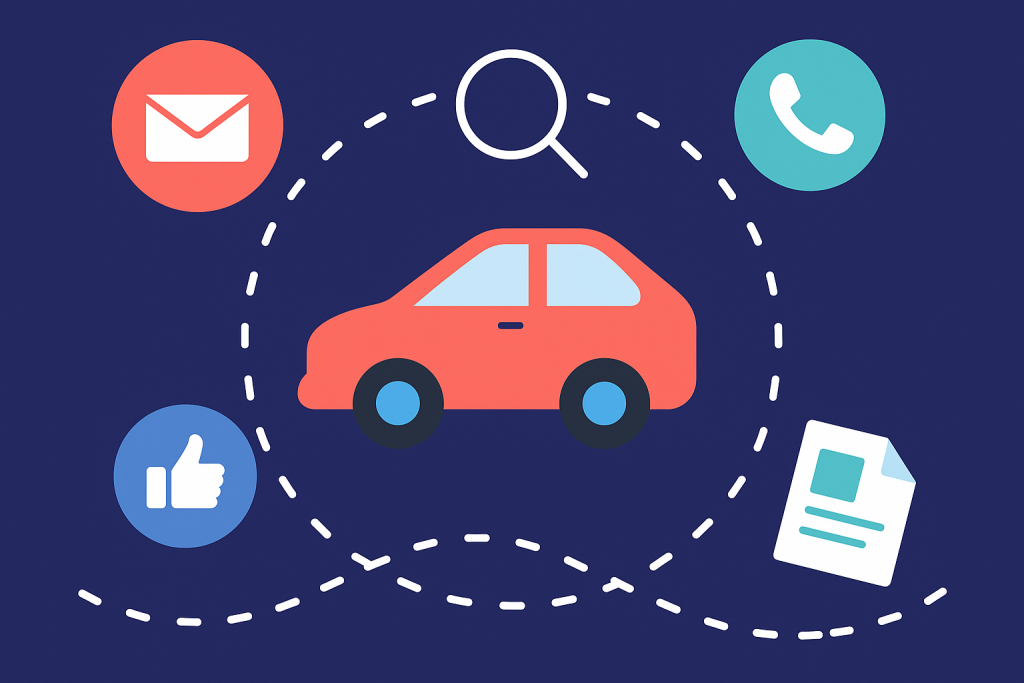
No single platform wins the sale. Car buyers interact with multiple touchpoints, search engines, social posts, email updates, and messaging apps before they make a move. If your digital channels aren’t connected, you’re missing chances to guide them through the process. A well-planned multi-channel approach doesn’t feel scattered or spammy. It feels seamless and personal.
Connect the Dots Across Search, Social, Email, and More
Let’s say someone clicks a Google ad for your dealership, visits your site, but doesn’t fill out the form. A few days later, they see a walkaround video on Instagram or get a follow-up email with a limited-time offer. That kind of journey only works if your systems are interconnected.
Your automotive digital marketing plan should link Google Ads, Facebook, WhatsApp Business, and email tools to a shared CRM. That way, you track where each lead came from, what they engaged with, and when to follow up, without repeating yourself.
Guide Buyers Without Feeling Pushy
Automation doesn’t mean blasting messages. It means sending the right message to the right people at the right time. A reminder for a test drive. A quick video about financing. A “Still interested?” nudge after a quote request.
These small touches work when they’re spaced out, personalized, and based on real interest, not guesses.
Use Automation to Stay Connected
CRM and messaging tools help your team know when to act and when to hold back. Good follow-up systems keep leads warm without annoying them. They also help your staff respond faster when buyers are ready. Multi-channel campaigns that run together, not apart, keep your brand in view without overstepping.
7. Use AI and Automation to Engage and Convert

Most buyers don’t call anymore. The message. They browse. They ask a question and expect a response within minutes. That’s where automation steps in. Not to replace your sales team, but to make sure no serious lead goes unnoticed.
Respond When It Matters Most
Let’s say someone checks out your website late at night. They ask if a model is in stock or whether test drives are available over the weekend. If there’s no answer, they’re gone. An AI chatbot doesn’t sleep. It can respond right away, collect the lead, and hand it off to your team in the morning. No lost time. No lost opportunity.
Smarter Follow-Ups Without the Noise
Not every lead is ready to buy, but that doesn’t mean they’re cold. A quick WhatsApp reminder, a price update, or a soft email follow-up can bring them back without pressure. When tied to your CRM, these messages feel natural and well-timed. Someone who clicked on your automotive PPC ads probably needs a different follow-up than someone asking about service slots.
Let the Data Do the Work
You don’t need to guess what’s working. AI helps track buyer behavior, what pages they visit, what questions they ask, and what emails they open. That way, your automotive digital marketing efforts get sharper, not louder.
Used the right way, AI isn’t about shortcuts. It’s about staying helpful, consistent, and ready, exactly when your buyer needs you most.
Measuring and Improving Results Over Time
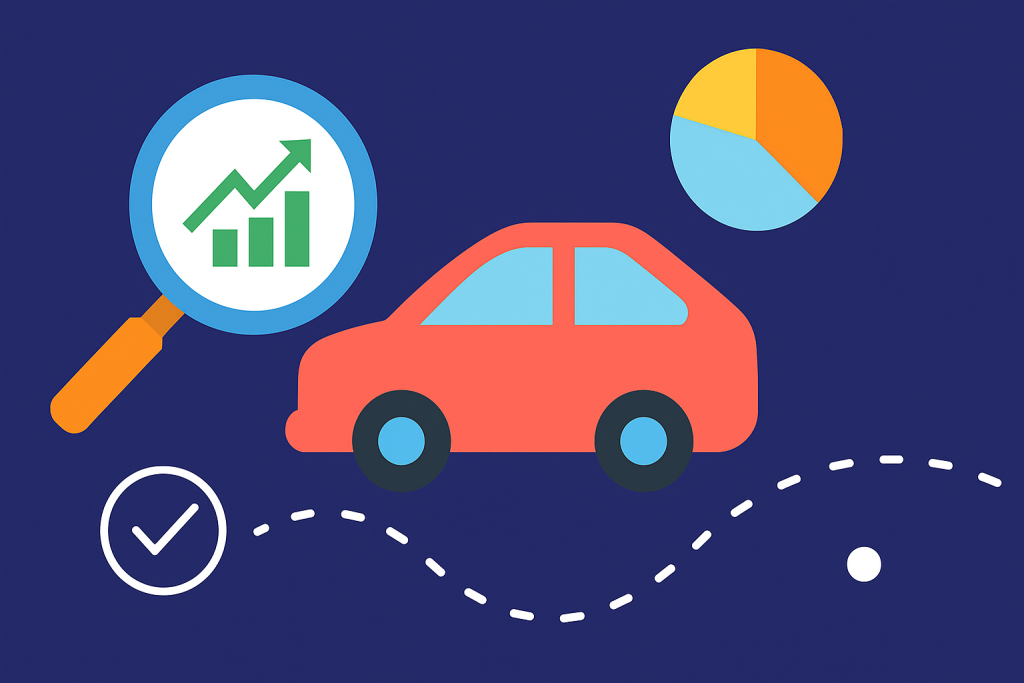
Running digital campaigns is only half the job. The other half? Knowing what’s working and where to adjust. In the auto industry, where every lead could mean a sale, tracking performance isn’t about chasing vanity numbers. It’s about watching what brings buyers through the door.
Track KPIs That Matter
Not every metric deserves your attention. High impressions might look good, but they don’t tell you who’s serious. What you need are real signals, ones that connect to buyer action.
Start with lead form submissions. These show someone’s taken the time to express interest. Next, call tracking helps you figure out which campaigns or pages are generating actual conversations. If someone’s picking up the phone, they’re usually closer to making a decision.
Showroom visits are even better. Use appointment tools or QR-based walk-in trackers to connect online behavior with offline footfall. When you can tie a test drive back to a social ad or a landing page, you start seeing what truly works.
Build a Feedback Loop You Can Learn From
Once you’ve identified strong performers, whether it’s a blog post, a local landing page, or a batch of automotive PPC ads, look closer. What did those pieces do right? Was it the headline, the timing, the offer?
At the same time, don’t ignore what’s underperforming. Perhaps your automotive digital marketing strategy could be improved in terms of messaging or better geo-targeting.
The key is not to guess. Let your numbers talk. Then act fast. Small changes, made consistently, can turn okay campaigns into top performers over time. Tracking without improving doesn’t help. But learning and adjusting? That’s what keeps results moving forward.
Conclusion
Winning in the auto industry today isn’t just about great vehicles. It’s about how you market them. Buyers are online, informed, and moving fast. A strong digital presence helps you stay visible, build trust, and reach serious leads before they hit the lot. From search and social to content, local SEO, and smart follow-ups, every touchpoint matters. The strategies we’ve covered aren’t trends. They’re essentials.

Tarun Gupta, CEO of Brainpulse Technologies, is a prolific author and digital marketing specialist. His insightful writings span SEO, content marketing, social media strategy, and email campaigns, offering invaluable expertise to businesses worldwide. Tarun’s contributions continue to shape the digital marketing landscape, guiding success in multiple niches.